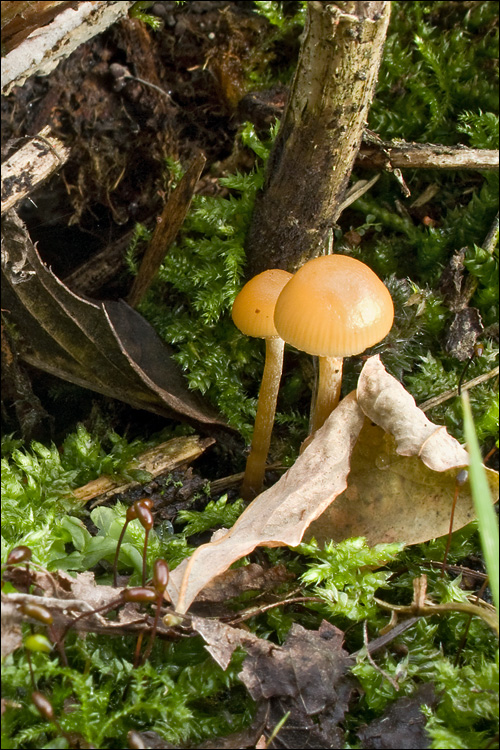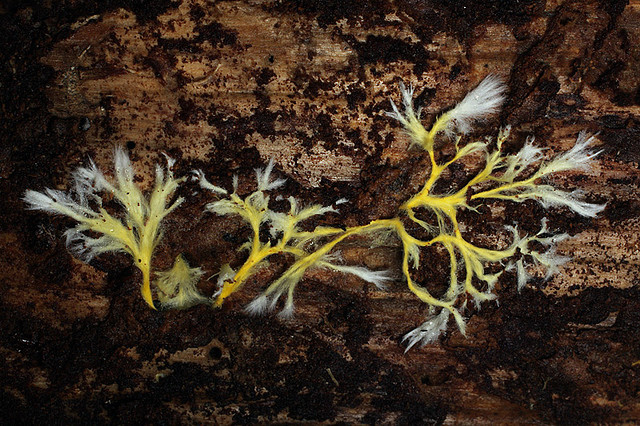Nutrition
 Fungi
are heterotrophic organisms, meaning they do not produce
their own means of nutrients such as a photosynthetic plant produces
glucose and oxygen
with the assistance of water, carbon dioxide, and sunlight. An advantage fungi have
over photosynthetic plants is because they do not need sunlight they
can thrive in darkened areas.
Fungi
are heterotrophic organisms, meaning they do not produce
their own means of nutrients such as a photosynthetic plant produces
glucose and oxygen
with the assistance of water, carbon dioxide, and sunlight. An advantage fungi have
over photosynthetic plants is because they do not need sunlight they
can thrive in darkened areas.
Galerina autumnalis is a fungus that thrives on dead materials making it a saprophyte. This choice of a substrate helps the ecosystem because it helps to decompose the rotten wood on the forest floors. The left over nutrients can then be used for other organisms.
The image to the left is an example of Galerina autumnalis living in association with the mossy environment. Learn about other organisms that are associated with G. autumnalis at the interactions page.
Galerina autumnalis 2010.
How does Galerina autumnalis
receive nutrients?
Fungi have an interesting way of acquiring nutrients that is
different from the traditional ingest then digest sequence. These
sessile organisms have a network, a mycelium, which consists of
thread-like structures called hyphae that help dissolve the
substrate. The substrate is another way of saying the fungi's food
source. By secreting enzymes these hyphae break down the
nutrients and give them the ability to grow through a substrate.
With the extension of the hyphae they are able to grow while
covering more surface area for potential fruiting bodies. Since Galerina autumnalis does
not have the true tissues or vascular systems that animals have to
transport nutrients, the hyphae act as a transport system to provide
nutrients throughout the fungi.
The picture to the right is an example of hyphae. They appear to be
root-like structures, but the microscopic morphology between roots
and hyphae are completely different.
Hyphae 2008.
Back to classification Go home Continue to habitat

